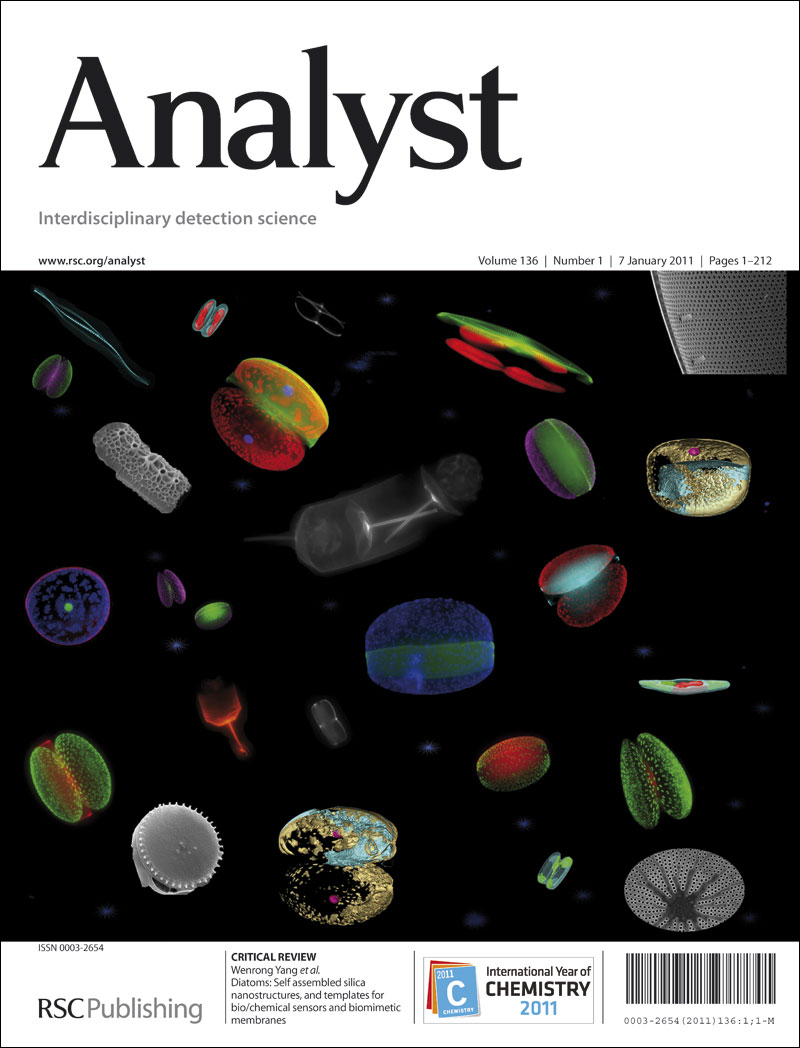用于多模固定相的温度响应互穿网络水凝胶包覆二氧化硅。
IF 3.3
3区 化学
Q2 CHEMISTRY, ANALYTICAL
引用次数: 0
摘要
在这项工作中,通过在氨基二氧化硅(Sil-NH2)表面涂覆水凝胶,获得了一种具有多模式分离能力的新型液相色谱固定相(Sil-NH2@CMC/PNIPAM)。该水凝胶由羧甲基壳聚糖(CMC)和聚n -异丙基丙烯酰胺(PNIPAM)的互穿网络组成。利用傅里叶变换红外光谱(FI-IR)、扫描电镜(SEM)和热重分析(TGA)成功验证了改性过程。这种固定相能够有效地分离和分析三种不同的模式:亲水相互作用色谱(HILIC)、反相液相色谱(RPLC)和离子交换色谱(IEC)。值得注意的是,PNIPAM在固定相表现出明显的温度响应特性。我们的实验结果表明,这种响应性主要归因于PNIPAM内部氢键随着温度升高而减弱。这种弱化促使分子链收缩,使互穿网络更加紧密。结果,分析物的保留行为发生了显著变化。此外,Sil-NH2@CMC/PNIPAM色谱柱在党参乙醇提取物的分离和分析中具有良好的效果。总的来说,这种温度响应和多模式固定相为高效液相色谱(HPLC)的未来创新提供了有希望的途径。本文章由计算机程序翻译,如有差异,请以英文原文为准。
Temperature-responsive interpenetrating network hydrogel coated silica used for multi-mode stationary phases.
In this work, a novel type of liquid chromatography stationary phase (Sil-NH2@CMC/PNIPAM) with a multi-mode separation capability was obtained by coating a hydrogel onto the surface of amino silica (Sil-NH2). The hydrogel comprises an interpenetrating network of carboxymethyl chitosan (CMC) and poly(N-isopropyl acrylamide) (PNIPAM). The modification process was successfully verified using Fourier Transform Infrared (FI-IR) spectroscopy, Scanning Electron Microscopy (SEM) and Thermogravimetric Analysis (TGA). This stationary phase effectively enables the separation and analysis of various compounds in three distinct modes: hydrophilic interaction chromatography (HILIC), reversed-phase liquid chromatography (RPLC), and ion exchange chromatography (IEC). Notably, PNIPAM exhibits a pronounced temperature-responsive characteristic in the stationary phase. Our experimental results suggest that this responsiveness is mainly attributed to the weakening of hydrogen bonds within PNIPAM as the temperature rises. Such weakening prompts the contraction of molecular chains, making the interpenetrating network more compact. As a result, there is a significant change in the retention behavior of the analyte. Additionally, the Sil-NH2@CMC/PNIPAM column has demonstrated its efficacy in the separation and analysis of the ethanol extract from Codonopsis pilosula. Overall, this temperature-responsive and multi-mode stationary phase offers promising avenues for future innovations in High-performance Liquid Chromatography (HPLC).
求助全文
通过发布文献求助,成功后即可免费获取论文全文。
去求助
来源期刊

Analyst
化学-分析化学
CiteScore
7.80
自引率
4.80%
发文量
636
审稿时长
1.9 months
期刊介绍:
"Analyst" journal is the home of premier fundamental discoveries, inventions and applications in the analytical and bioanalytical sciences.
 求助内容:
求助内容: 应助结果提醒方式:
应助结果提醒方式:


